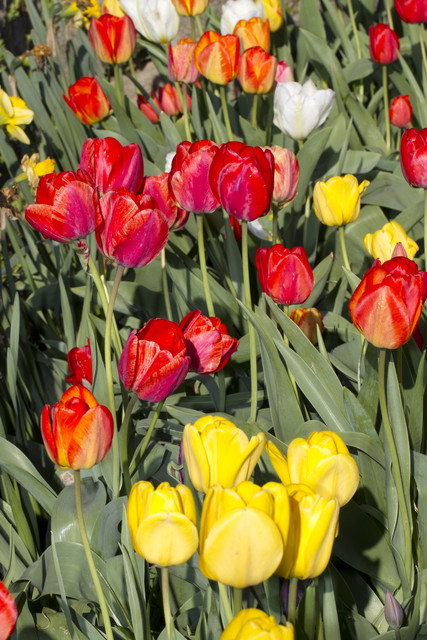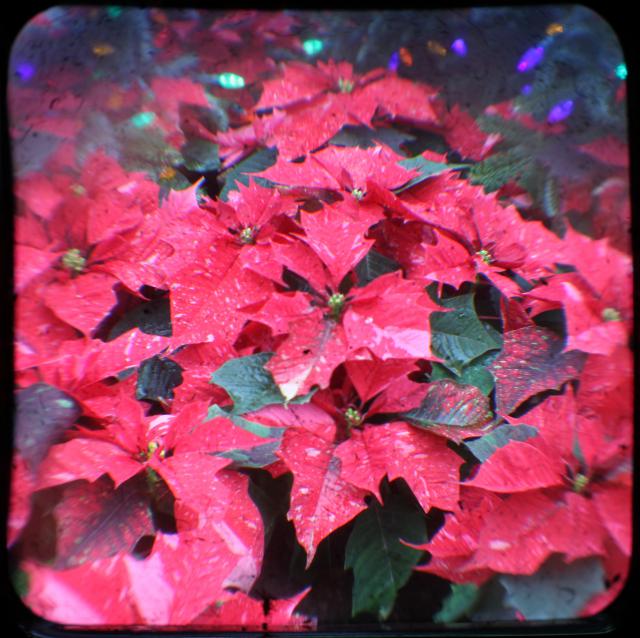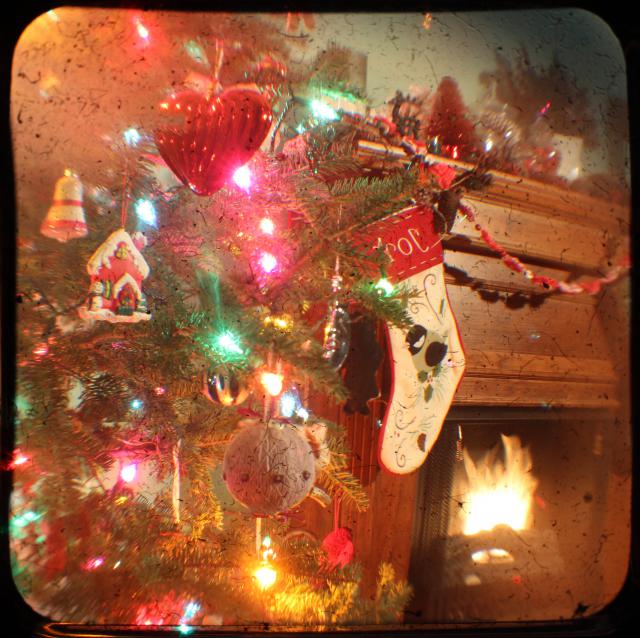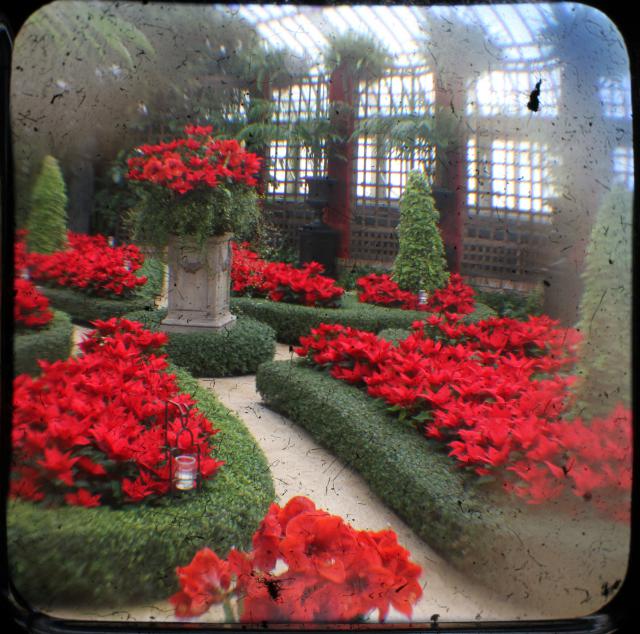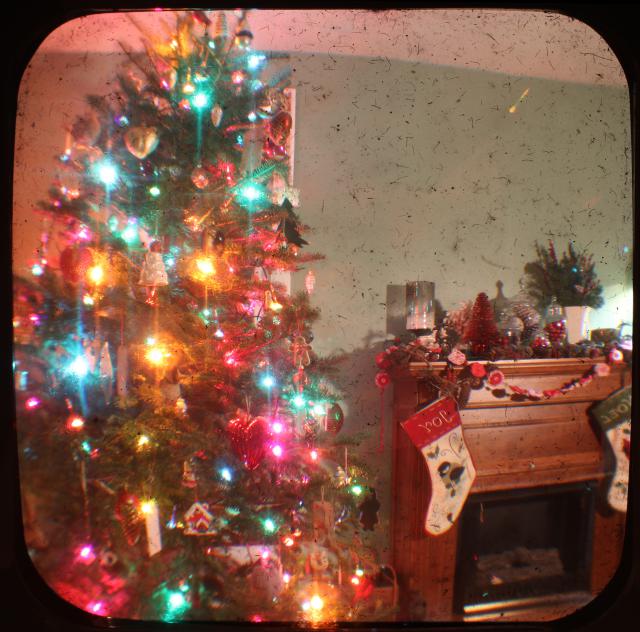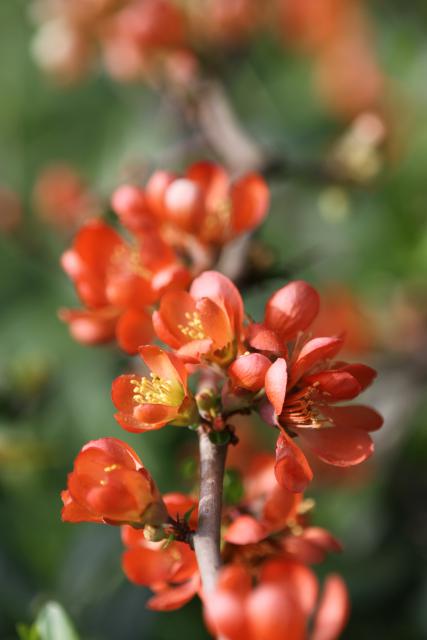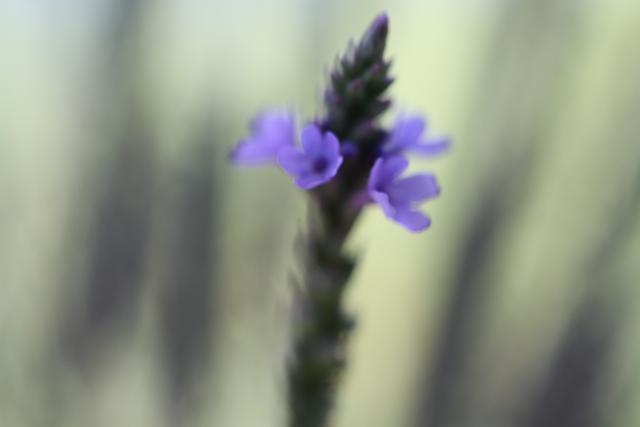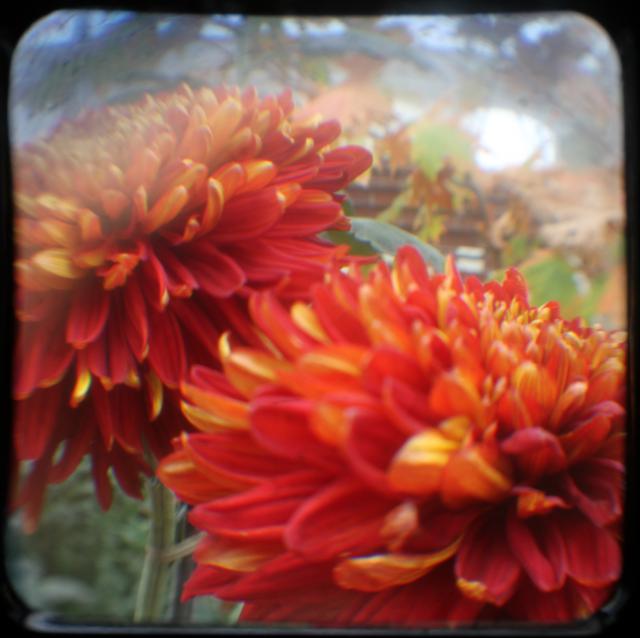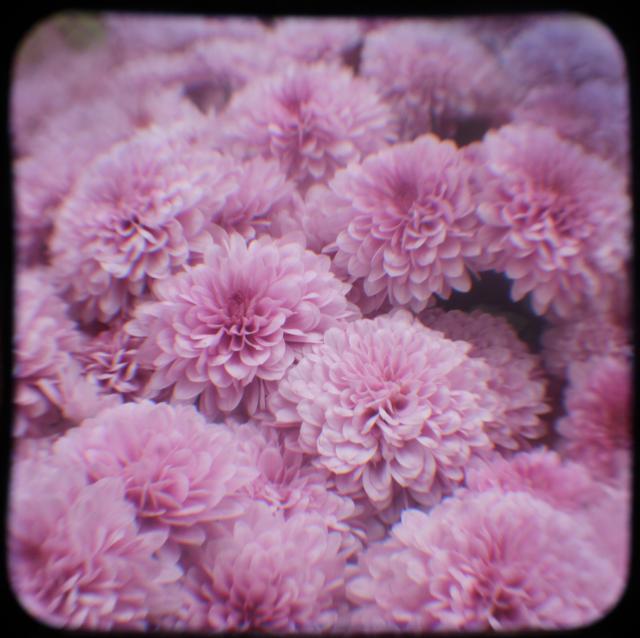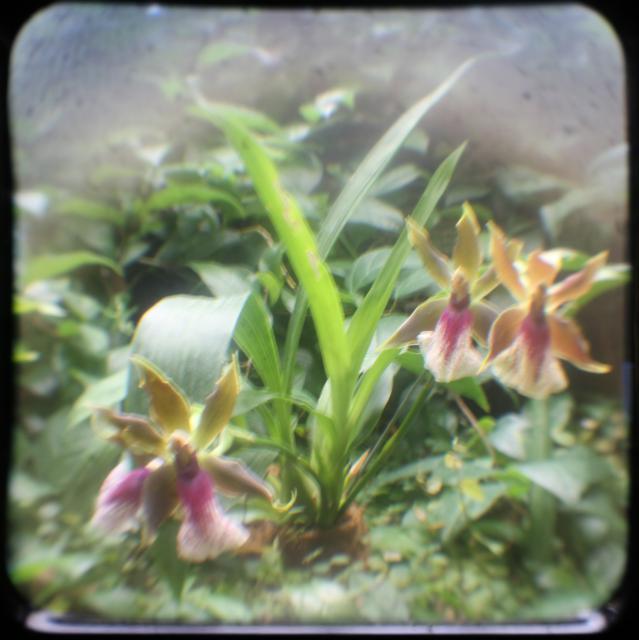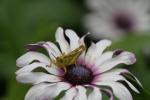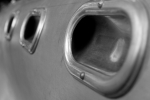flowers
Macro Quince
ktuli — Tue, 04/26/2011 - 21:13
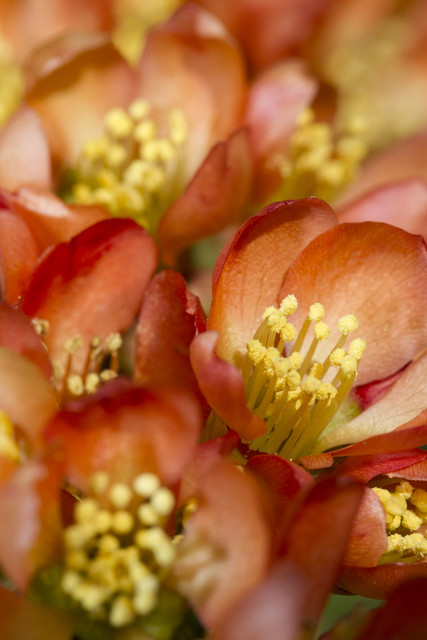
I suppose we'll continue the macro flower shots
I shared another shot of quince blossoms from last spring. This year, I used my new flash and 100mm f/2.8L macro lens to get in a lot closer to blossoms.
Technical Data: Canon EOS 7D, Canon EF 100mm f/2.8L Macro IS USM, 1/100 sec at f/11. Canon Speedlight 580EX II flash in auto mode. Image Stabilization on. ISO 200. RAW processing in Adobe Camera Raw.
Why This Photo: More macro and new flash work.
What Works: The tack sharp focus on the pollen covered stamens is a nice balance with the blurred foreground and background produced by the fairly shallow depth of field. Also, having the in-focus blossom off-centered in the shot is appealing. The entire shot being filled with blossoms prevents there being distracting elements in the frame.
What Doesn't Work: The in-focus blossom breaks the edge of the frame, and ideally should have been kept within the frame. Additionally, the bottom edge of the frame is somewhat darker than the rest - perhaps due to a slightly mis-aimed flash.
I really like bright orange color that pervades this entire shot. On top of that, the very close look at a small flower that could easily be overlooked provides a nice illustration of a tiny pattern in nature.
What do you think?
- Bill
Macro Tulip
ktuli — Mon, 04/25/2011 - 20:50
So with another break in the rain today, I decided to take the camera and my new flash (more on that soon) and flash bracket out and see what else I could get. I find tulips hard to shoot singly as their size proportions just make them difficult to capture. So I decided to aim the flash flight inside the flower and work on a macro view.
Technical Data: Canon EOS 7D, Canon EF 100mm f/2.8L Macro IS USM, 1/13 sec at f/16. Canon Speedlight 580EX II flash in auto mode and wireless control. Image Stabilization on. ISO 200. RAW processing in Adobe Camera Raw.
Why This Photo: Honestly, I was just playing with the new flash in wireless mode and seeing how well the flash bracket worked. Well, that and what I said above about tulips being hard to shoot.
What Works: The bright colors seem to pop, and the placement of the stigma and stamen off-center is nice. The focus resting right on those pollen covered stamen provides a good counter balance with their rough surface compared to the smooth petals of the tulip.
What Doesn't Work: Because of the flash, the reflection of the red color from the flower is picked up on the stigma (the center piece of the flower). Additionally, the right edge of the frame has part of the petal curling back into the shot - with the depth of field it is fairly blurred, but still is a little distracting.
Drop me a line and let me know what you think.
- Bill
Spring Color
ktuli — Sat, 04/23/2011 - 21:55
Just stopping by to share some spring color.
Technical Data: Canon EOS 7D, Canon EF 100mm f/2.8L Macro IS USM, 1/120 sec at f/16. Canon Speedlight 580EX II flash in auto mode. Image Stabilization on. ISO 200. RAW processing in Adobe Camera Raw.
Hopefully this will be a regular sight... if only all those April showers would give us a break.
- Bill
Poll: Claytonia caroliniana
ktuli — Mon, 04/11/2011 - 19:40
Well, I've been on the fence about shooting RAW for a little while now. I've heard some a great deal number of sources that I really should. My reluctance stems from not really liking to have to do too much post production work. I really like to get my shots right in camera and not mess with things after the fact.
But this past weekend, I captured some shots in both RAW and JPG formats so I could start comparing them to see what I preferred. Take a look and let me know what you think...
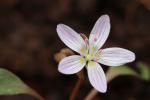 JPG Straight out of the Camera |
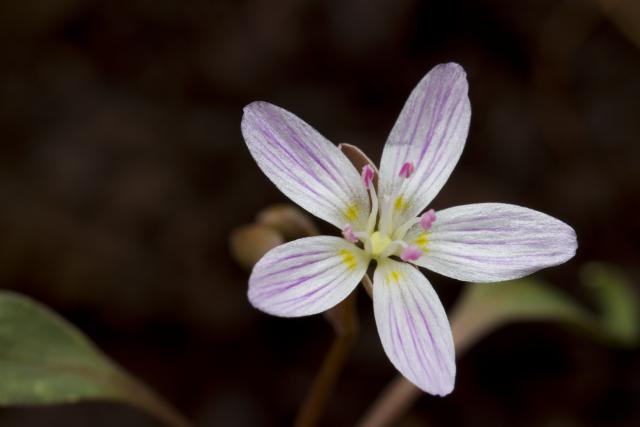 |
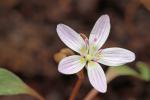 JPG w/ Auto-Smartfix from PSE8 |
|
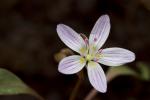 RAW w/ Brightness +50, Contrast +40, Sharpening 25 |
Technical Data: Canon EOS 7D, Canon EF 100mm f/2.8L Macro IS USM, 1/13th sec at f/11. Image Stabilization on. ISO 200. Post production as noted. Powdermill Nature Reserve, Rector, PA.
In case you're wondering, the flower is a Claytonia carolinana. They are tiny little flowers - probably in the range of 1/2 to 3/4 inch in size - and are some of the early bloomers each spring. I had been to Powdermill a couple weeks earlier, but it was cold the night before and there were no flowers to be found. I made a return trip this weekend and found many of them scattered all over (if you looked closely enough!). I searched around for a good specimen to shoot (most times, the flower faced downwards), and actually ended up accidentally uprooting it while trying to clear some debris around it - I relocated it, replanted it, and took the shots I wanted.
Oddly enough, I specifically remember "under-exposing" this image in the field. The camera kept wanting to meter the scene brighter to get the details in that dirt background, and I specifically wanted to avoid that so that I could maintain as much detail in those white petals as possible. Yet, when I looked at the JPG, it still looked bright and washed-out. Then when I ran it through the Auto Smart-Fix function in Photoshop Elements 8, it made that background even brighter still!
I will be honest, I have no clue what settings I should have chose for the Brightness and Contrast when converting the RAW file to JPG, but I simply slid things along until it looked like I remembered it looking in the field. Probably a little more aggressive than it really was, but that's ok. I had wanted the background dark, and I think the RAW file achieves that. I still have some learning to do to figure out what to do with the RAW conversion.
But for now, place your vote for which version you think looks the nicest.
Thanks for stopping by!
- Bill
Merry Christmas (part 3)
ktuli — Fri, 12/24/2010 - 13:19
Ok - as promised, here's the Christmas TTV! Thanks for stopping by! Enjoy your holiday, and here's hoping you and your's a safe, happy, and healthy Christmas and New Year!
Technical Data: Canon EOS 7D TTV Argus Seventy-Five, Tokina AT-X M35 Pro DX AF 35mm f/2.8 Macro 1:1, 1/10 sec at f/8. ISO 200. Monopod and handheld. Cropped in Photoshop Elements 8.0. Phipps Conservatory.
Technical Data: Canon EOS 7D TTV Argus Seventy-Five, Tokina AT-X M35 Pro DX AF 35mm f/2.8 Macro 1:1, 10 sec at f/9.9. ISO 200. Monopod and tripod mounted. Cropped in Photoshop Elements 8.0.
Technical Data: Canon EOS 7D TTV Argus Seventy-Five, Tokina AT-X M35 Pro DX AF 35mm f/2.8 Macro 1:1, 1/21 sec at f/9.9. ISO 200. Monopod and handheld. Cropped in Photoshop Elements 8.0. Phipps Conservatory.
Technical Data: Canon EOS 7D TTV Anscoflex II (without a TTV contraption), Tokina AT-X M35 Pro DX AF 35mm f/2.8 Macro 1:1, 8 sec at f/9.9. ISO 200. Monopod and tripod mounted. Cropped in Photoshop Elements 8.0.
That last shot was done with my new Anscoflex II that Anya found for me! I shot it without the assistance of a TTV contraption which was definitely a challenge, but I love the different look it gives!
Anyway, Merry Christmas!
- Bill
PS: Just because, here's a bonus camera drawing shot...
Technical Data: Canon EOS 7D, Tokina AT-X M35 Pro DX AF 35mm f/2.8 Macro 1:1, 4 sec at f/22.6. ISO 200. No post production.
Quince Blossoms
ktuli — Thu, 12/09/2010 - 21:24
Yeah yeah, I know... I've been slacking.
Things have just been overwhelming recently, and I'm going to be quite honest and admit that I'll probably continue slacking here for a bit longer. The holidays are bearing down on me soon here, and in January we're off to our trip to Indonesia. I'm trying really, really hard to get setup to take my EOS 7D diving with me, and that's been taking a good chunk of my time in research (and obsessing).
So I figured I would try and at least get something posted. I was looking at some of our photographs from our backyard and came across this photo of some quince blossoms from this past spring. I thought the green and red colors fit well with the current holiday season.
Technical Data: Canon EOS 7D, Tamron 180mm f/3.5 Di SP LD 1:1 Macro, 1/200 sec at f/4.6. ISO 200. No post production. Taken in our backyard.
Why This Photo: I sometimes wander in the yard with the macro lens, just to see what I can find.
What Works: The shallow depth of field produces a nice soft background, and line of the stem leading into the frame draws the viewer's eyes into the shot. The nice balance between the red blossoms and the green leaves in the background helps the keep the blossoms as the main focal element.
What Doesn't Work: The light coming from the one side produces some shadows on the right side of the shot, perhaps the use of a reflector would have balanced things out better. I also debate whether the stem running right up the center of the shot works all that well.
I haven't been behind the shutter often enough recently either. I am going to try and and get some photos of the upcoming lunar eclipse - perhaps I'll even manage to get some timelapse work done - I'm hoping as practice for when I'm in Indonesia!
I'll try to be a bit more diligent with the posts, but honestly, expect more slacking...
- Bill
Soft Swamp Verbena
ktuli — Wed, 11/10/2010 - 19:28
At first glance this shot might appear to be one to throw away, but after looking at it a few times, I find myself really liking the soft nuances of this photo of the fairly common Swamp Verbena (Verbena hastata).
Technical Data: Canon EOS 7D, Tokina AT-X M35 Pro DX AF 35mm f/2.8 Macro 1:1, 1/330 sec at f/3.5. ISO 200. No post production. Moraine State Park, Portersville, PA.
What Works: The soft focus (probably not intentional, but helped along by the macro lens, the small subject, and probably wind) helps to produce a pleasing affect here, causing the viewer to scan the photo repeatedly searching for recognizable features. The wide aperture helps to make the other stems just dark shadows in the background. The overall exposure and colors continue the soft, almost dream-like quality of this shot.
What Doesn't Work: The center placement of the main flower stem might have been better suited to one side. Also, if the background stems could have shown some of the purple color to illustrate that they have flowers as well might have helped to make a nice pattern in the soft focus.
Obviously, an intentionally out of focus photo is not the easiest thing to pull off successfully, and honestly this one is probably a fluke. But it definitely warrants looking at a photo a few times before throwing it away if you can catch a lucky break like this on what might have been considered a mistake.
- Bill
TTV Mums
ktuli — Tue, 11/02/2010 - 20:04
Ok - just one more TTV shot and then I'll give it a break for a while (maybe).
Technical Data: Canon EOS 7D TTV Argus Seventy-Five, Tokina AT-X M35 Pro DX AF 35mm f/2.8 Macro 1:1, 1/10 sec at f/8. ISO 200. Monopod and handheld. Cropped in Photoshop Elements 8.0. Phipps Conservatory.
I think I'll just leave this one open for critique. Enjoy.
- Bill
TTV Sea of Purple Flowers
ktuli — Sat, 10/30/2010 - 07:47
I really liked this photo the moment I framed it, and I was very pleased it came out as nicely as I had envisioned.
Technical Data: Canon EOS 7D TTV Argus Seventy-Five, Tokina AT-X M35 Pro DX AF 35mm f/2.8 Macro 1:1, 1/12 sec at f/11.3. ISO 200. Monopod and handheld. Cropped in Photoshop Elements 8.0. Phipps Conservatory.
Why This Photo: Even while working on this TTV photography, I still couldn't resist the urge to fall back on my favorite form of photography - macro. This mass of purple flowers just worked great to get close and fill the frame with the repeating pattern of the flowers.
What Works: The focus is spot on even through the Argus Seventy-Five's viewfinder. The distorted edges does a great job of blending the pattern of the flowers right out to the edge of the frame. And the colors and exposure levels are perfectly matched to what I actually saw through the viewfinder.
What Doesn't Work: The biggest thing I missed in this shot are the two dark spots between a couple flowers because they broke up the pattern, and the same holds for the small light spot in the upper left corner. The smaller dark spot and the light spots at the top could probably be ignored, but the larger dark spot is somewhat distracting.
Oddly enough, this shot lacks any of the dirt specs that exist in a lot of the other photos. There must be something with the focal distance of the subject that causes those specs to be visible or not.
But like I said, I really like this shot. The simplicity of the shot is juxtaposed by the intricacy of each flower, allowing the viewer to just get lost in the frame - or at least I think so.
- Bill
TTV Model Train and Orchids
ktuli — Thu, 10/28/2010 - 18:51
Ok - as promised, no lengthy discussion about the details of TTV photography. We'll take a look at two recent TTV shots, and go through my usual critique of them.
Technical Data: Canon EOS 7D TTV Argus Seventy-Five, Tokina AT-X M35 Pro DX AF 35mm f/2.8 Macro 1:1, 1/50 sec at f/4. ISO 200. Monopod and handheld. Cropped in Photoshop Elements 8.0. Phipps Conservatory.
Why This Photo: The model railroad display at Phipps made for many opportunities that begged for the TTV vintage treatment, this shot would probably look incredibly flat and boring with regular photography, but pops with TTV.
What Works: The focus hits right on the house and the front of the engine of the train. With the distortion of the viewfinder, getting this right isn't always as easy as with a regular shot. The distortion and blurred edges almost allows this shot to be mistaken for a real scene as opposed to a miniature setup.
What Doesn't Work: This exposure is a little bright for my tastes with this style of photography, and the blown out hot spots along the top are a bit distracting. The area of focus may have been better suited if it were shifted slightly to the right to get more of the train in focus.
Technical Data: Canon EOS 7D TTV Argus Seventy-Five, Tokina AT-X M35 Pro DX AF 35mm f/2.8 Macro 1:1, 1/2 sec at f/8. ISO 200. Monopod and handheld. Cropped in Photoshop Elements 8.0. Phipps Conservatory.
Why This Photo: I liked the idea of old style photos of flowers - almost as if I was out on an expedition back when this Argus camera was just released and exploring and photographing this flower for the first time. I know - I have quite the imagination.
What Works: I love the balance the flowers give with two on one side and one on the other, and the colors really pop in this shot.
What Doesn't Work: The shot is way too over-exposed, and that is unfortunate because the long shutter speed of 1/2 second definitely added to the blur and lack of focus in the shot. Though the colors are nice, they're probably washed out because of the over exposure. The framing of the shot may have worked better to move the orchids up a little in the frame and reducing the empty space towards the top.
I still am just so pleased with this "new" style of photography, and am definitely looking forward to heading back out with this rig. But I do have a good handful more photos from this trip to Phipps, so I'll continue sharing them (I think I still owe you for that sleeper of a post yesterday! ;) haha!)
What do you think? Are you a fan of this TTV stuff? Drop me a comment and give your own critiques of the technique and these photos.
- Bill


